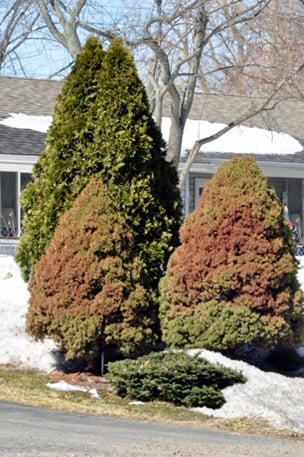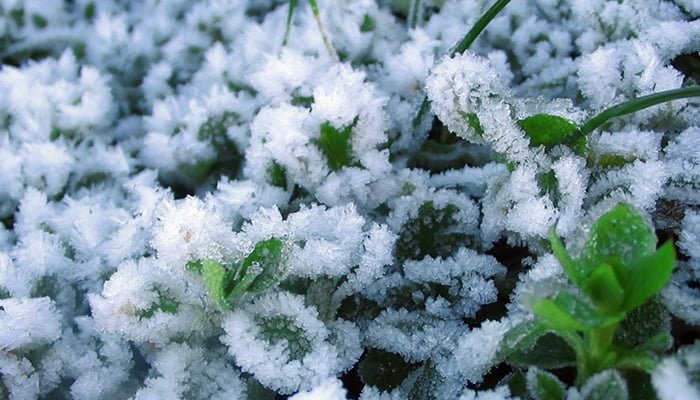We know it’s cold out, and the last thing you want to be doing is going anywhere near cold water outside, but it is important to make sure you aren’t neglecting your winter plants. Water usage in broadleaf trees does drop during the winter season, but it does not completely stop. Additionally, while evergreens have the ability to survive in winter, they actually transpire more water during cold days, making them more prone to winter drying. Cold dry air also poses a risk to your plant roots that could cause drying out.
You may be thinking that snowfall will be enough to keep your roots and winter plants moist, but did you know it takes an average of 10 inches of snow to equal one inch of rain?
Here Are Some Winter Plants & Landscape In Need Of Extra Water:
- Trees younger than 5 years old
- Certain herbaceous perennials
- Dogwoods
- Willows
- European white and paper birches
- Newly established lawn

Winter Watering Tips:
- Water when temperatures (and soil) are above 40 degrees F with no snow cover
- Apply water in the middle of the day to allow for the water to soak in before evening temperatures
- Soil should be soaked to a depth of 6-8 inches
- Newly planted shrubs should get 5 gallons monthly during dry winter months
- Large established shrubs require 18 gallons a month during dry winter months
- Water during extended dry periods without snow cover – about 1-2 times a month
- If your sprinkler system has already been winterized, it should not be turned back on. Winter plants should be watered with a hose.
- Watering quantities should be independently implemented according to each individual plant’s needs.
- Be careful not to overwater when watering plants in winter. Winter plants absorb water slower than during growing seasons, and cool soil can easily become soggy.
The cold, harsh air of winter is quite drying. This dry air, coupled with slow water absorption, means that winter winds can remove water from plants faster than roots can absorb. Since water evaporates even quicker from the foliage of evergreens, these plants are more susceptible to winter drying. Additionally, when the ground freezes, water underground becomes ice, which cannot be absorbed by plant roots for obvious reasons.
While the need for nutrients and water is lessened and slowed down in dormant months, it does not disappear. For this reason, it is important not to neglect winter watering, especially when daytime temperatures reach above freezing.
Plant cells that are full of water will be stronger and better equipped to fight against cold damage. Water also acts as an insulator, meaning that moist soil will typically stay warmer than dry soil.
It’s easy to believe that your plants are dormant in winter so they do not need caring for. But, this is not entirely true, and neglecting to water your winter plants could cause damages associated with dryness. Water each plant within your yard based on its individual needs and be sure to pay extra attention to new plants, and those that need more water to survive the cold months. Here are some important tips to help prepare your yard for winter. Wondering how trees survive winter? Find out HERE. Additionally, consider Wilt-Pruf applications to help protect your plants from frost damage. Wilt-Pruf will act as a protective coating to hold in moisture on plant foliage and its stems, reducing water loss in times of stress.
For your free tree, landscape, plant health care, or pest management consultation contact Red Cedar today and consider winter tree work for THESE REASONS.


